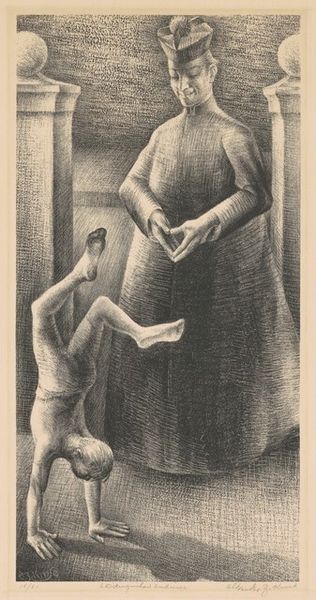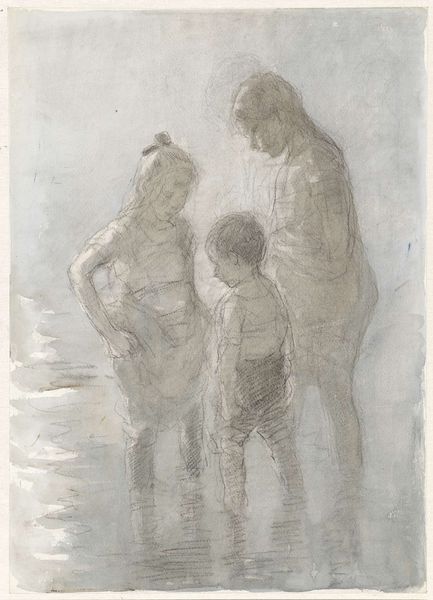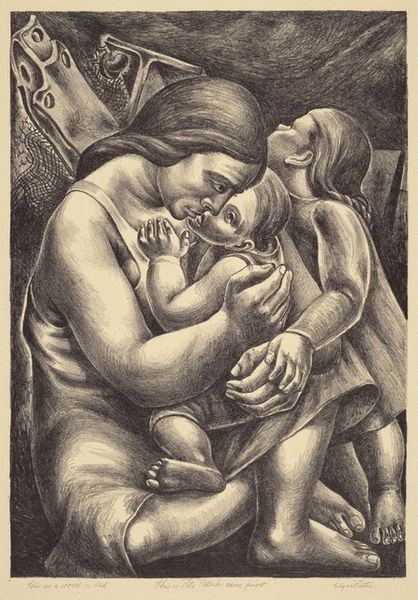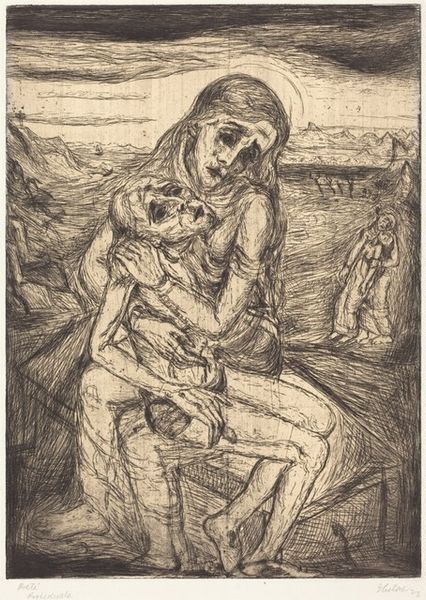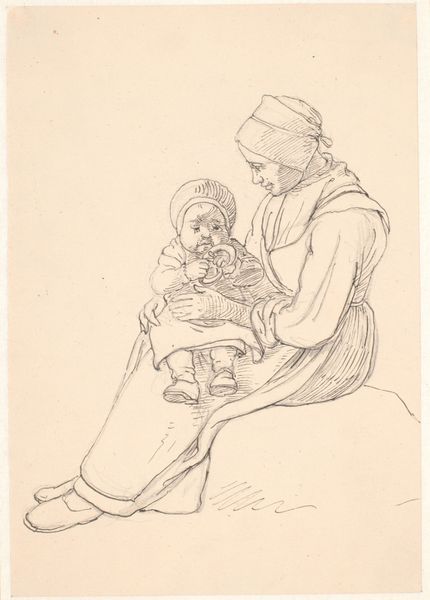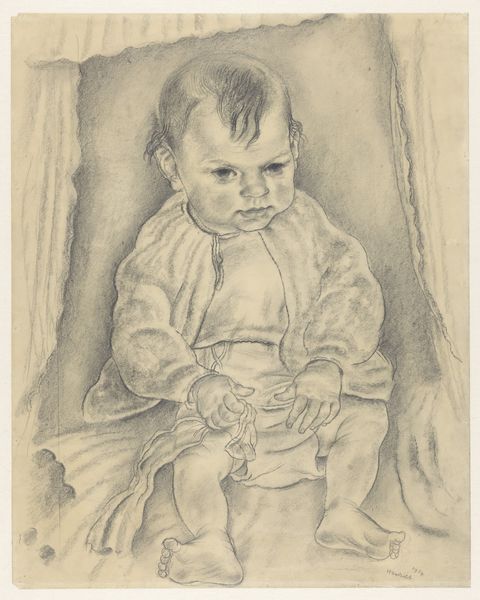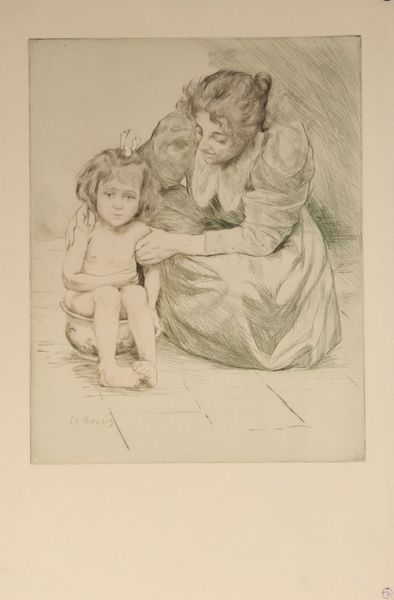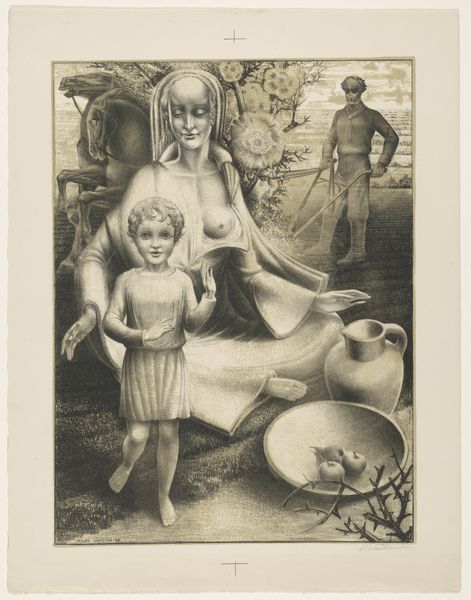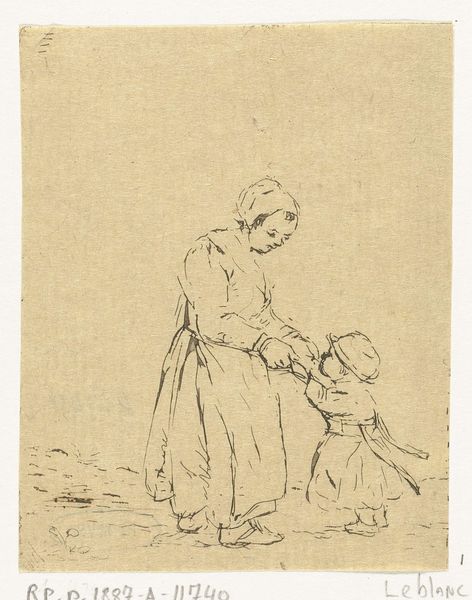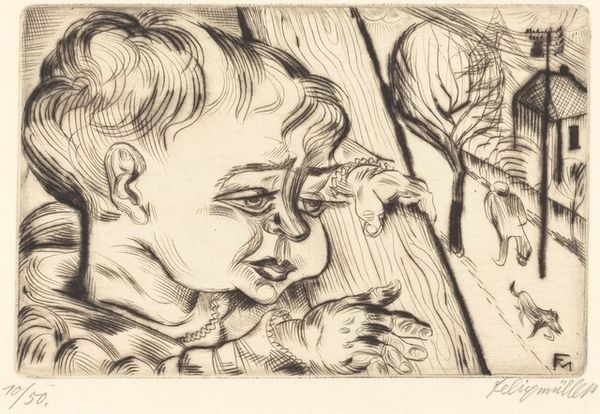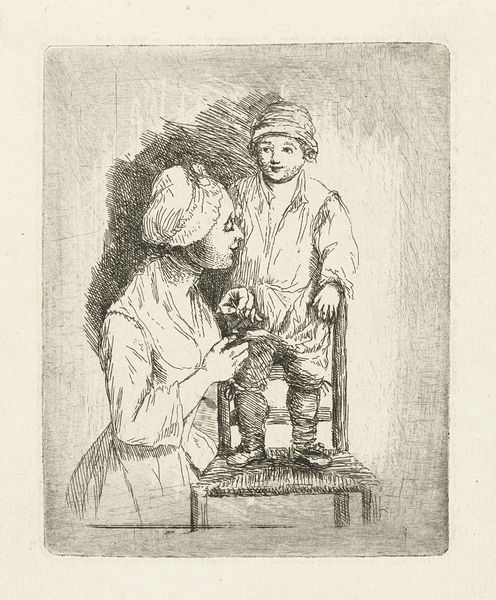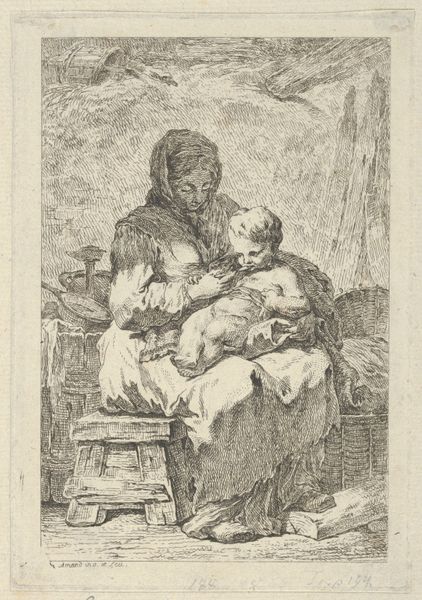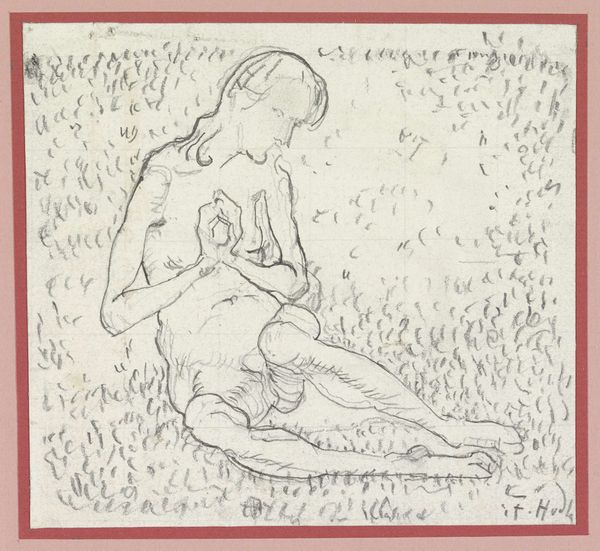
drawing, print, pencil
#
portrait
#
drawing
# print
#
portrait reference
#
pencil drawing
#
group-portraits
#
pencil
#
portrait drawing
#
genre-painting
#
modernism
#
realism
Dimensions: image: 340 x 215 mm sheet: 443 x 290 mm
Copyright: National Gallery of Art: CC0 1.0
Curator: What a striking composition. I immediately sense a quiet, watchful mood. There's a tension between the intimate family moment and a sense of something larger, perhaps societal, pressing in. Editor: Indeed. We are looking at "On the Beach", a pencil drawing created in 1936 by the artist John Langley Howard. It offers a window into family life during the Depression era in America. Howard's technique lends a certain gravitas to the scene. Curator: Absolutely. The pencil work is so detailed, almost photographic in its realism. It speaks to the human need for connection during times of economic struggle. Notice how the father's gaze is fixed outward, protective, while the mother observes the children. It echoes the classical Madonna image. Editor: And consider the children playing near the water's edge. Their innocence serves as a poignant contrast to the hardship undoubtedly felt by the adults. This highlights a recurrent theme of the New Deal era. These representations were thought to bring comfort to the working class who saw images of their lives depicted and validated through art. Curator: I'm drawn to the beach itself, an archetypal symbol of the liminal space, the border between safety and the unknown. Water, of course, holds myriad symbolic meanings—cleansing, danger, renewal. The family stands at that precipice. It invites a broader societal commentary beyond merely showing daily life. Editor: Precisely. The seemingly casual details—the toy, the discarded bottle—acquire a symbolic weight in this context. Each element whispers of everyday struggles and small comforts. But this art can also reveal a more global and ideological undertone of promoting a traditional model of family in a time when many such ideas were transforming, shifting the artwork toward social propaganda. Curator: I can agree. The drawing is layered with such potent iconography, creating an image that invites both personal introspection and socio-historical analysis. What this artist represents is an emotional story about a period and family's ability to find intimacy in such difficulty. Editor: "On the Beach" is more than just a snapshot. It prompts us to consider the relationship between family, adversity, and the subtle, yet powerful ways in which art can reflect and shape societal values.
Comments
No comments
Be the first to comment and join the conversation on the ultimate creative platform.
